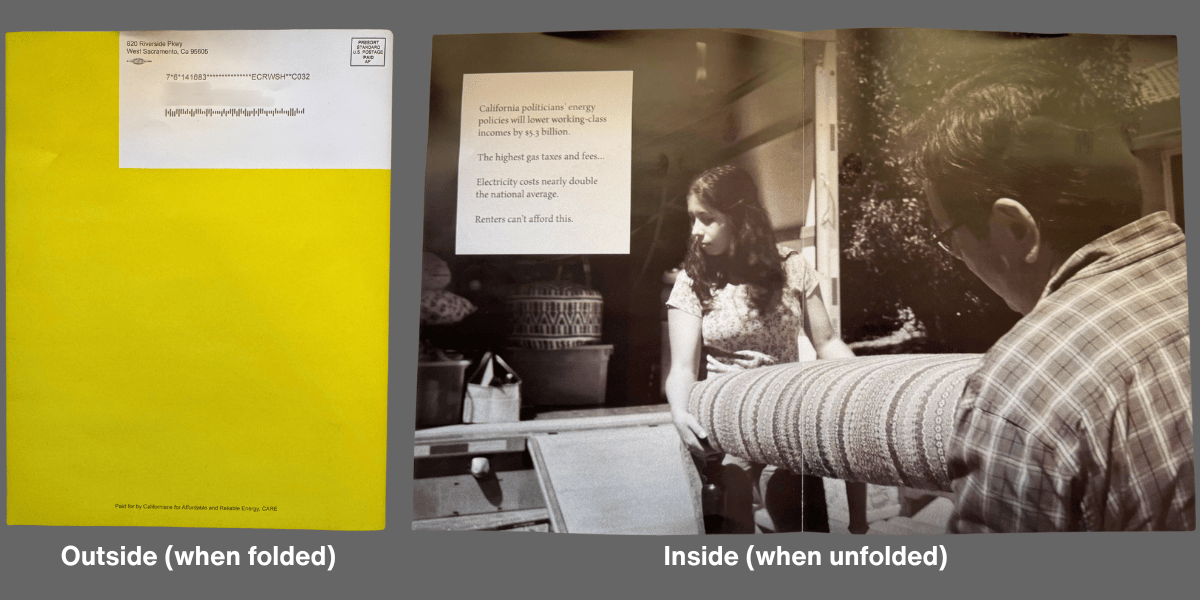📬 Pre-Sorted Nonsense of the Week
Let’s talk about AI.
Not the kind that’s replacing voice actors.
I mean the kind that’s suddenly in your workflow, your strategy deck, your headlines, your campaign briefs. Or, mostly… everywhere.
And yes, it’s impressive. It can whip up postcard copy in 12 seconds. Generate fake performance stats in 5. Maybe even draft this newsletter you're reading right now. (Don’t worry, I’ll take the credit.)
Here’s the problem: speed isn’t strategy.
Marketers are treating AI like a shortcut to a better conversion rate. Slap together a “personalized” headline, ask for a few buzzwords, drop in a QR code, and boom—instant success. Or not.
Let me be clear: I’m not anti-AI. I use it daily. You should too.
It helps me brainstorm formats. Build headline tests. Pressure-test assumptions.
But here’s what it can’t do: fix a weak offer.
It can’t tell you if your audience is wrong.
And it definitely won’t tell you your creative is boring.
You still have to think.
You still have to test.
And yes, you still have to care. Sorry.
AI is here to help, not bail you out. If your campaign sucks, the best it can do is help you suck more efficiently. So use it. But know when to trust your gut over a prompt.
And maybe don’t ask it to write your entire acquisition strategy. I’ve seen what happens. It’s not pretty.
🧠 The Johnson Box
If your offer sucks, AI will just help you suck faster.
If your target’s wrong, it’ll just help you reach more wrong people. (Wait, did I say that right?)
If your messaging is broken, congratulations… you now have 12 beautifully written versions of bad copy.
Or, you can:
Use AI to stress-test, not shortcut. Ask it what’s missing. Feed it real results. Use it to sharpen—not replace—your brain. (Or your copywriter. You’re welcome, Janice.)
🗑️ Junk Drawer
This thing landed in my mailbox last week and immediately earned a spot here.

BRIGHT YELLOW! Glossy. (The photo doesn’t do it justice.)
No teaser. No headline. Just an address area and a microscopic “Paid for by Californians for Affordable and Reliable Energy” line that answers exactly zero questions.
Open it up and you get a grainy black-and-white photo of a man and woman carrying a rug into a rental truck.
The copy? A four-line paragraph floating in space:
“California politicians’ energy policies will lower working-class incomes by $5.3 billion.
The highest gas taxes and fees...
Electricity costs nearly double the national average.
Renters can’t afford this.”
No branding.
No CTA.
No idea what I’m supposed to do with this information.
If AI made it, it glitched. If a human made it, we need to talk. Call me.
🛠️ Some Strategic BS
AI can improve direct mail—when you use it like a strategist. Try this:
Generate 10 envelope headlines for a real offer. Choose your best 3 and test them.
Create variations in messaging—not finished copy.
Use AI to reframe targeting segments (e.g., “Who’s most likely to buy premium wine subscriptions?”), then adult up and review the results.
Speed up test planning by having AI draft a test matrix—like comparing two offers (discount vs. free trial) across two formats (postcard vs. letter).
Bottom line? Use AI to get to the good stuff faster. But if you don’t know what “good” looks like, no machine can save you, no matter how intelligent they are.
📣 The Required CTA
Want help making your campaigns suck less, AI or not?
Start with your offer.
Sharpen your target.
Then we can talk strategy, and tools.
👉 Work with me. You bring the challenge. And the budget.
I’ll bring the sarcasm—oh, and 25 years of making direct mail work.
✍️ P.S. Because There Should Always Be One
Know someone who thinks AI = strategy?
Forward this to them. Gently.
Or check my NEW (and improved?) YouTube channel.
It’s like this newsletter, but not as wordy.
